Lisbon has become one of Europe’s most talked-about cities — and not just for weekend breaks or digital nomad visas. Whether you’re planning a move, staying for a few months, or just trying to find a quiet base close to the action, one question comes up a lot: Where can I stay that’s calm, safe, and still close to everything?
It’s a reasonable thing to ask. Lisbon can be noisy in places, especially in the older districts with narrow streets and lively nightlife. Some areas feel overcrowded year-round, while others empty out entirely outside of working hours. And while the city is generally safe, not every part offers the same sense of comfort, especially at night or if you’re unfamiliar with the surroundings.
If you’ve ever searched something like “which areas of Lisbon are quiet enough, safe, and close to the center”, you’ve probably found vague or generic answers. Most guides tend to highlight where to stay for a short visit or where the “cool” spots are — which doesn’t always help when you’re looking for something quieter, more liveable, and well-connected.
This guide aims to fill that gap.
You’ll find a list of Lisbon neighbourhoods that strike a solid balance: they’re residential enough to feel relaxed, safe enough for evening walks or working from a café, and close enough to the city’s core that you won’t feel cut off. Some of these areas are well-known among locals but rarely mentioned in travel guides. Others sit just outside the main tourist zones and are ideal for a longer stay.
We’ll also look at what “quiet”, “safe”, and “central” really mean in the context of Lisbon. The city’s geography, public transport system, and layout mean that what feels central isn’t always obvious — and some of the most peaceful areas are just a 10-minute tram ride from downtown.
You’ll also get a clear breakdown of each neighbourhood’s character, how easy it is to get around, what the evenings feel like, and who it might be best suited for — whether you’re here for a few weeks or considering something longer term.
If you’ve been scrolling forums or rental sites and feel unsure where to even begin, this guide should give you a clearer picture of which parts of Lisbon actually make sense for a calm, connected, and safe day-to-day experience.
Let’s take a closer look at what to keep in mind before choosing your spot — and then walk through the best areas to consider
What Does “Quiet, Safe, and Central” Mean in Lisbon?
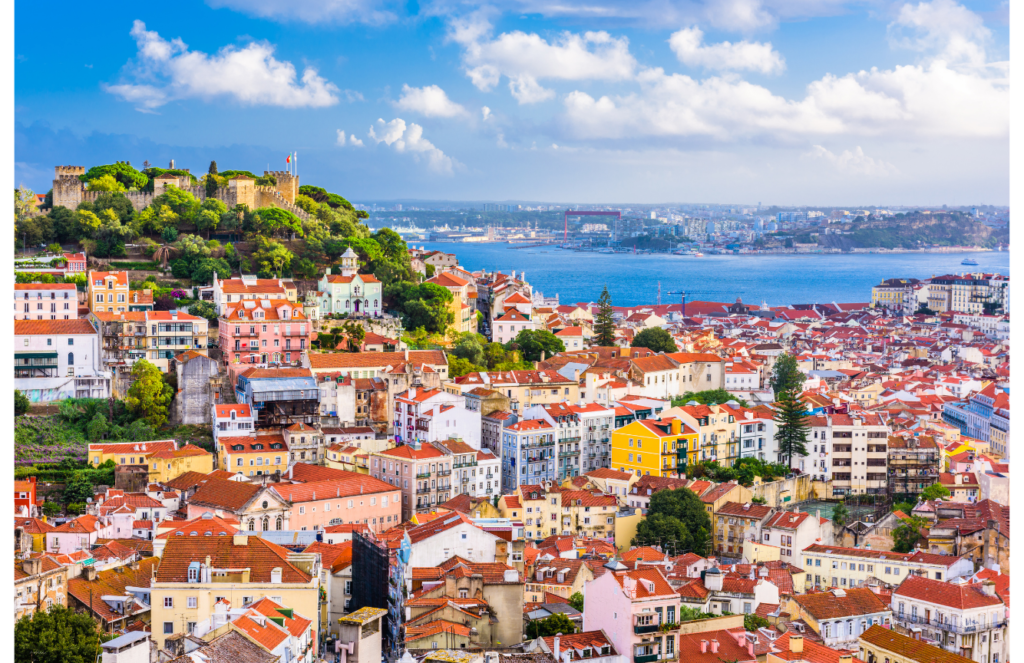
When people ask for quiet, safe, and central areas in Lisbon, they’re usually imagining a place where they can get a good night’s sleep, walk around without worry, and still be close enough to grab a coffee in Chiado or hop on a tram to Alfama. The challenge? Lisbon doesn’t always combine those three things in obvious ways.
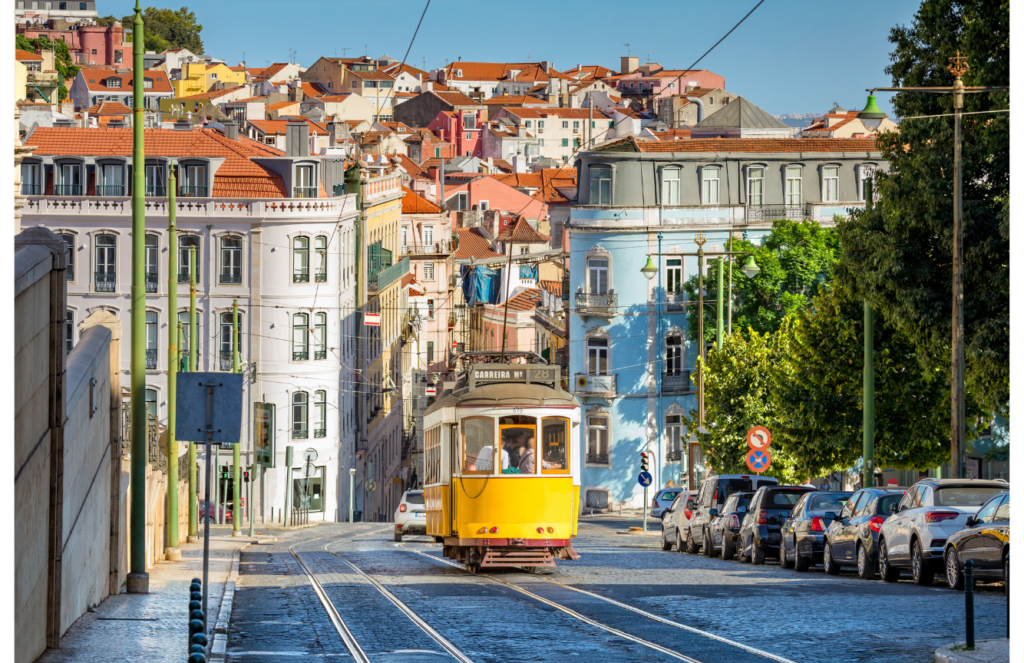
Quiet Doesn’t Always Mean Isolated
In Lisbon, “quiet” can depend a lot on the time of day — and the street you’re on. Some areas look calm on a map but are right above a bar or along a noisy tram route. Others are deeply residential and stay peaceful day and night. If you’re staying long-term, things like how thick the windows are or how active the nearest square is can matter just as much as how far you are from the nightlife zones.

Safety Is About More Than Just Crime Rates
Lisbon is generally considered a safe city, especially when compared to other European capitals. But there’s a difference between “statistically safe” and feeling safe. Well-lit streets, active cafés in the evening, and neighbourhoods with a lived-in, local feel tend to be where people feel most comfortable — especially if you’re walking home late or living alone. Petty theft happens, as it does in any big city, but there are areas where residents feel more relaxed and secure.
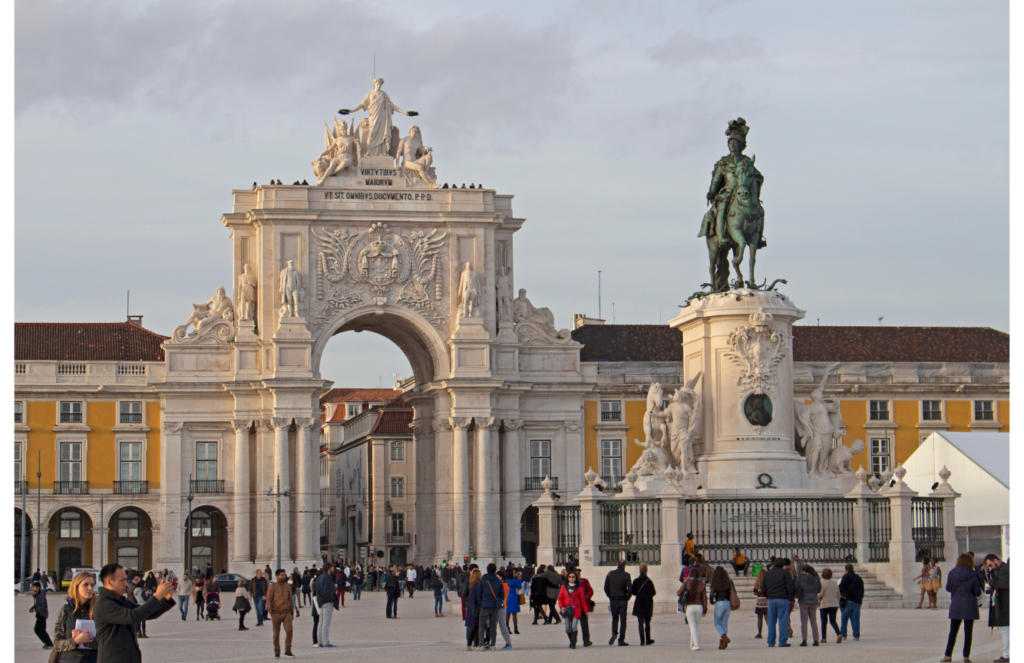
Central Can Be Misleading
Being “central” in Lisbon doesn’t just mean being near Praça do Comércio. Thanks to the city’s small size and solid public transport, you can be 10–15 minutes away from the downtown core and still feel completely connected. That said, some neighbourhoods are much better served by metro or tram lines than others. It’s worth knowing that a 3 km distance in Lisbon can feel very different depending on whether you’re walking uphill or riding the tram.
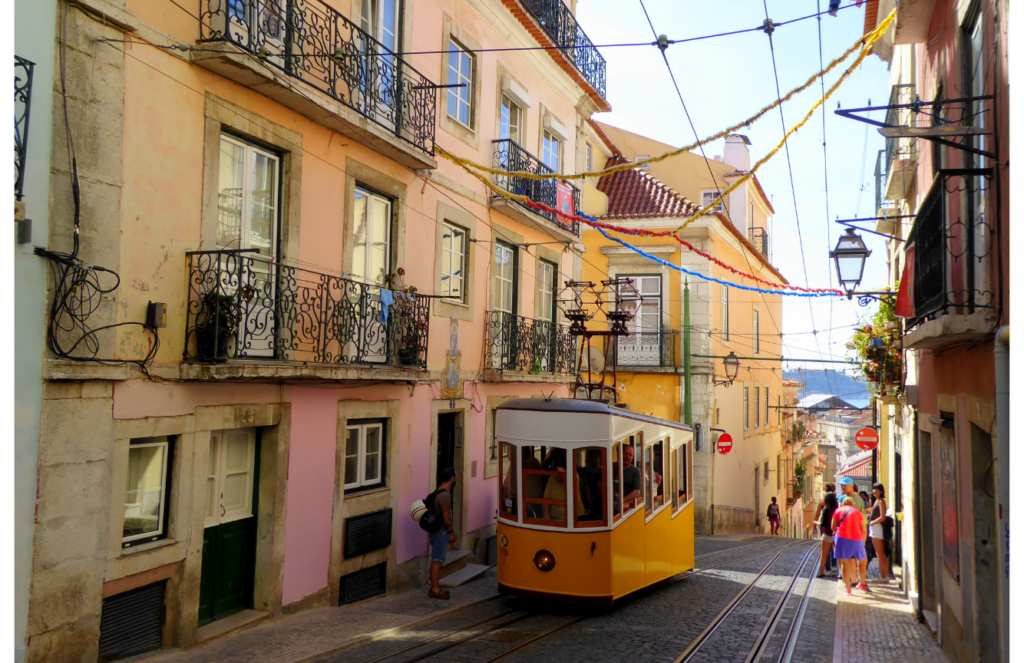
Putting It All Together
What you’re really looking for is a place that gives you:
- A good buffer from nightlife noise and tourist crowds
- A sense of everyday life (local shops, parks, families, not just Airbnbs)
- Easy access to key parts of the city without long commutes
You might not find a neighbourhood that’s perfect in every way, but some come close — and they’re often overlooked by people who only search for places near the main tourist sights.
Best Neighbourhoods In Lisbon That are Quiet, Safe And Close To The City Centre.

Campo de Ourique
Campo de Ourique is a neighbourhood that many visitors overlook — which is exactly why it appeals to people looking for a quieter, more liveable part of Lisbon. It has the feel of a self-contained village within the city, where life moves at a calmer pace and everything you need is close by.
While it doesn’t have a metro station, it’s still well-connected by buses and tram 28, which runs directly through the area and into the city centre. By public transport, you can reach Baixa or Chiado in about 15–20 minutes. Walking takes longer, but the neighbourhood’s flat layout makes it manageable.
This area is known for its strong local character. You’ll find small grocers, independent shops, bakeries, and schools, giving it a lived-in feel. It’s largely residential, which keeps the street noise low. At night, the atmosphere is especially quiet — no late-night bars blasting music or waves of tourists spilling out of clubs.
In terms of safety, Campo de Ourique consistently ranks among the more secure districts in Lisbon. It’s well-lit, family-oriented, and has a strong local community presence. If you’re someone who prefers peaceful evenings and appreciates the ability to run errands without crossing town, it’s a great fit.
It’s particularly appealing for remote workers, couples, or people staying long-term who want a stable, low-drama part of the city that doesn’t feel cut off. While you won’t find major tourist landmarks here, that’s part of the point — Campo de Ourique is where you live, not where you go sightseeing.
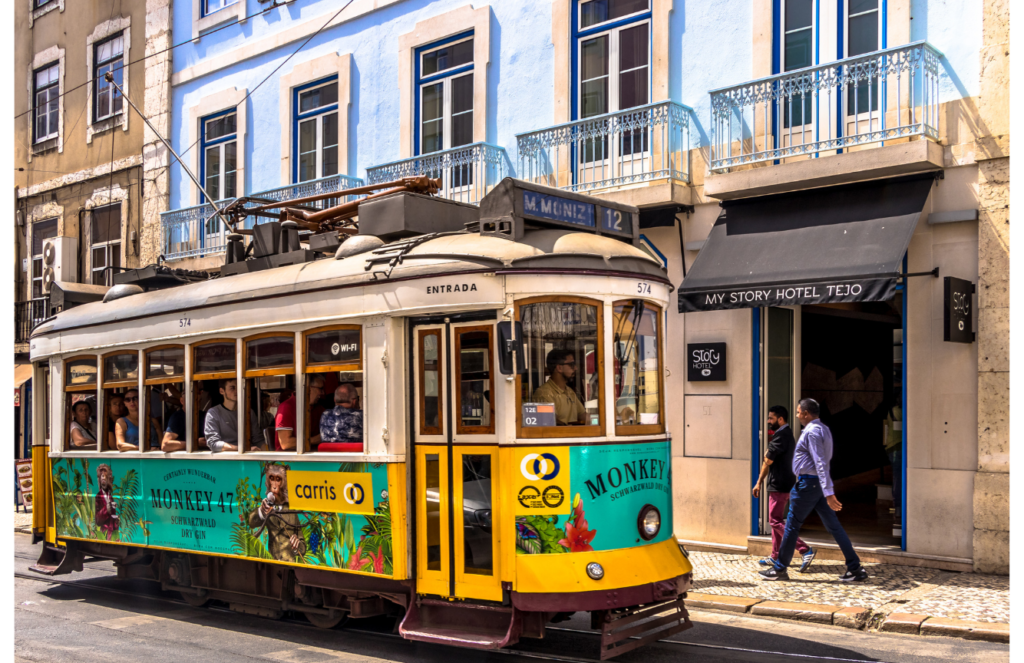
Estrela
If you’re someone who values access to green space and a more relaxed city rhythm, Estrela makes a strong case. The neighbourhood is built around Jardim da Estrela, a large public park that feels like the centre of local life. During the day, the benches are filled with people on lunch breaks, parents with strollers, and retirees reading the paper. It’s not a tourist hub — and that’s exactly the appeal.
Estrela doesn’t draw crowds or nightlife seekers, which helps keep things quiet, especially after dark. While not completely cut off from the rest of the city, it has a slower pace and less turnover than nearby districts like Santos or Cais do Sodré. It feels settled — a place people actually live, not just pass through.
Tram 28 runs directly through the area, and several bus lines connect it to central Lisbon. There’s no metro stop in Estrela itself, but Rato station is walkable from many parts of the neighbourhood. Getting to Baixa or the riverside usually takes around 15 minutes, depending on where you’re starting from.
Safety is rarely a concern here. Estrela has a reputation for being calm, clean, and consistent. It’s mostly made up of older apartment buildings, small local businesses, and long-term residents. Many streets are well-lit, and there’s enough activity to feel secure without any of the noise or crowding that comes with more commercial areas.
This part of Lisbon suits people staying longer term — especially remote workers or couples who want easy city access without constant movement outside their window. It’s not a trendy district, and that’s a good thing. Estrela works best if you’re after something stable, low-key, and within reach of the rest of the city when you need it.

Príncipe Real
Príncipe Real is one of the most central areas in Lisbon that still manages to keep a relatively calm and residential atmosphere — at least during the day. It sits just north of Bairro Alto, which means it’s close to restaurants, shops, and nightlife, but without being directly in the middle of it.
What sets this area apart is its balance. It’s more polished and upmarket than some other parts of the city, with a mix of classic architecture and updated apartments. There are small gardens, boutique stores, organic markets on weekends, and plenty of cafés where locals and expats linger during the week.
Access to the rest of the city is easy. From here, you can walk to Avenida da Liberdade in about 5 minutes, and metro stations like Rato and Restauradores are nearby. Because of the central location, you can reach almost anywhere in the city within 15 minutes by metro or foot.
In terms of noise, Príncipe Real is quieter than it seems at first glance. The streets just off the main roads are surprisingly calm, especially in the evenings. However, its proximity to Bairro Alto does mean that certain blocks may still pick up weekend traffic or people walking home late. It’s best to check the exact street if you’re booking a short stay.
The area is widely considered safe. It’s well-lit, always has people around, and draws a mix of professionals, small families, and longer-term foreign residents. There’s enough activity to feel lively without becoming overwhelming.
Príncipe Real works well for people who want to be central without being in the thick of Lisbon’s party scene. It’s especially suited to those who enjoy city life — cafés, art shops, galleries — but still want a place to come home to that doesn’t feel chaotic.

Alvalade
Alvalade isn’t the first place most visitors think of when planning a stay in Lisbon, but for long-term renters and locals, it’s one of the city’s most dependable residential areas. It’s further from the historic centre than some of the other neighbourhoods on this list, but what it lacks in tourist appeal, it makes up for in comfort, space, and ease of daily life.
The area has a distinctly local feel — wide sidewalks, low-rise buildings, and plenty of small businesses that cater to residents rather than tourists. You’ll find bakeries, fruit shops, libraries, parks, and schools spread out across quiet, tree-lined streets. The layout makes it easy to walk around without having to deal with the narrow, hilly alleyways common in central Lisbon.
Alvalade is also well-connected. The metro runs directly through it, with several stations in the area, including Alvalade and Roma. From there, you can get to Baixa or Chiado in under 15 minutes. It’s one of the rare areas where you can live in a low-density, peaceful environment and still be fully plugged into the transport network.
Noise levels are low overall. Because the neighbourhood is more spread out and not designed for tourism, it doesn’t attract large crowds or nightlife. Most of the activity comes from people going about their routines — walking to work, running errands, or having lunch at a café.
Safety here is generally not a concern. Alvalade has a long-standing, settled population and a practical, well-maintained environment. It’s the kind of place where you’ll see kids walking home from school and neighbours chatting in the park.
Alvalade suits people who don’t mind being slightly outside the tourist core in exchange for a calmer, more residential base. It’s particularly good for families, students, and remote workers staying for more than just a few weeks.
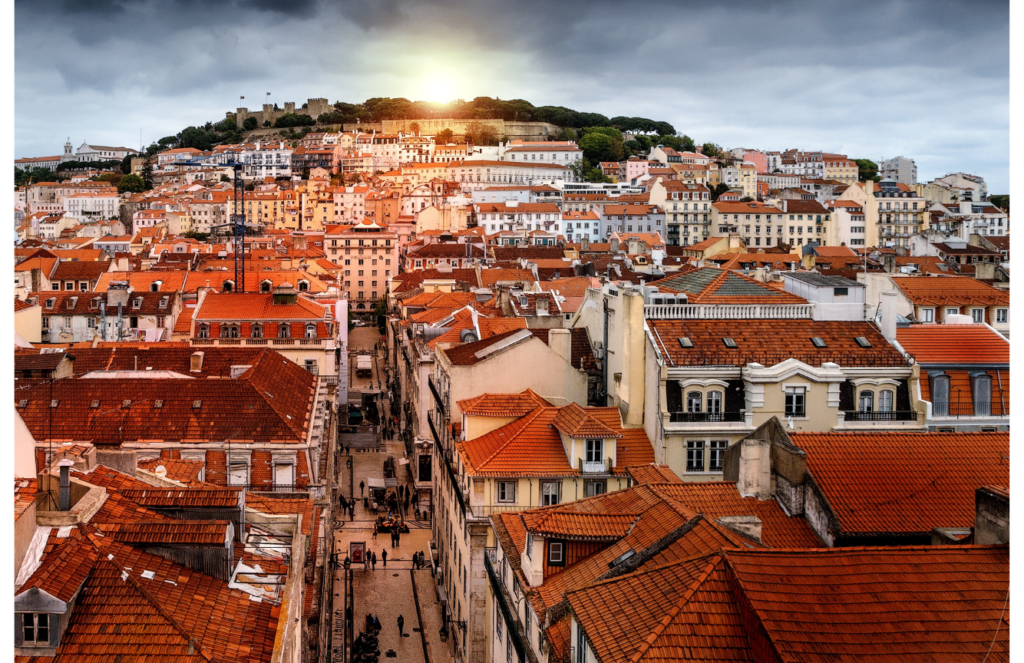
Lapa
For years, Lapa has had a reputation as one of Lisbon’s most upscale areas — home to embassies, old mansions, and quiet residential streets. While that’s true, it’s also more accessible and practical than many people assume, especially for long-term visitors who want calm surroundings without feeling isolated.
Unlike neighbourhoods where nightlife or tourism dominate daily life, Lapa is low-traffic and low-drama. There’s no major shopping street or entertainment zone, which helps keep the area peaceful well into the evening. You’re more likely to hear footsteps and church bells than car horns or music from bars.
The neighbourhood sits on a hill above Santos and Estrela, giving some areas open views toward the river. Getting around depends on where exactly you are — it’s a short walk to tram and bus routes, but there’s no metro station within Lapa itself. That said, Santos train station and Rato metro aren’t far if you don’t mind a bit of walking or using the bus to bridge the gap.
Safety is one of the main reasons people choose Lapa. It has a settled, quiet feel, and many buildings are still family-owned. The streets are wide, clean, and rarely crowded, even during the day.
Lapa is best for people who want distance from the busy tourist zones but still value access to the rest of the city. It suits remote workers, couples, or anyone looking to rent for a few months or more in a place that feels stable and somewhat removed from the usual pace of central Lisbon.
If you spend a lot of time in Lisbon’s older neighbourhoods, Avenidas Novas can feel like a completely different city. It was designed in the early 20th century with broad avenues, wide pavements, and modern infrastructure — a contrast to the tight alleys and steep climbs found elsewhere.
This is one of the most efficient parts of the city to live in. Metro lines run directly through the area, with key stations like Saldanha, São Sebastião, and Campo Pequeno connecting you to central Lisbon in under ten minutes. Public transport here is reliable and frequent, which makes commuting or getting around without a car easy.
While Avenidas Novas is full of office buildings and larger apartment blocks, it’s not a hectic area. Outside of weekday rush hours, the streets are fairly quiet. On weekends especially, the broad roads and open sidewalks make the neighbourhood feel almost empty — which can be a plus if you’re after some calm.
What it lacks in traditional charm, it makes up for in day-to-day convenience. Grocery stores, gyms, cafés, and pharmacies are all easy to reach. The buildings are newer, and many rentals come with elevators, soundproofing, and more space than what you’d find downtown.
The area is also known for being safe, clean, and consistent. There’s very little nightlife, so evenings tend to stay peaceful. If you’re looking for somewhere low-key, practical, and walkable, it’s a smart choice — especially for longer stays.
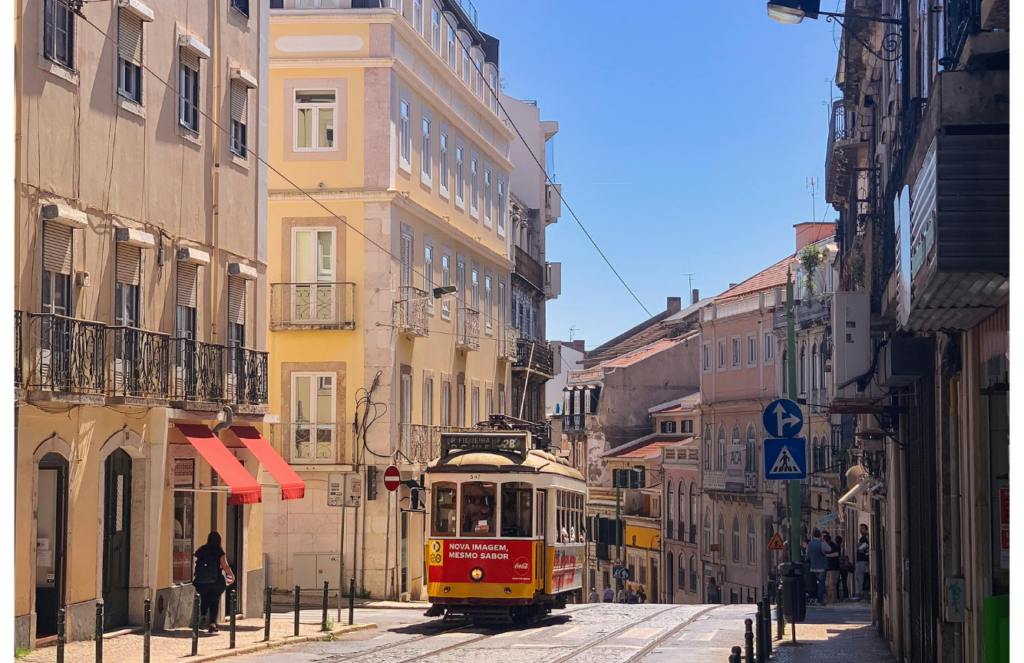
Avenidas Novas
If you spend a lot of time in Lisbon’s older neighbourhoods, Avenidas Novas can feel like a completely different city. It was designed in the early 20th century with broad avenues, wide pavements, and modern infrastructure — a contrast to the tight alleys and steep climbs found elsewhere.
This is one of the most efficient parts of the city to live in. Metro lines run directly through the area, with key stations like Saldanha, São Sebastião, and Campo Pequeno connecting you to central Lisbon in under ten minutes. Public transport here is reliable and frequent, which makes commuting or getting around without a car easy.
While Avenidas Novas is full of office buildings and larger apartment blocks, it’s not a hectic area. Outside of weekday rush hours, the streets are fairly quiet. On weekends especially, the broad roads and open sidewalks make the neighbourhood feel almost empty — which can be a plus if you’re after some calm.
What it lacks in traditional charm, it makes up for in day-to-day convenience. Grocery stores, gyms, cafés, and pharmacies are all easy to reach. The buildings are newer, and many rentals come with elevators, soundproofing, and more space than what you’d find downtown.
The area is also known for being safe, clean, and consistent. There’s very little nightlife, so evenings tend to stay peaceful. If you’re looking for somewhere low-key, practical, and walkable, it’s a smart choice — especially for longer stays.
Avenidas Novas suits people who want Lisbon’s amenities without the unpredictability of its older neighbourhoods. It’s a strong option for remote workers, professionals, and anyone who wants comfort and calm without giving up location.
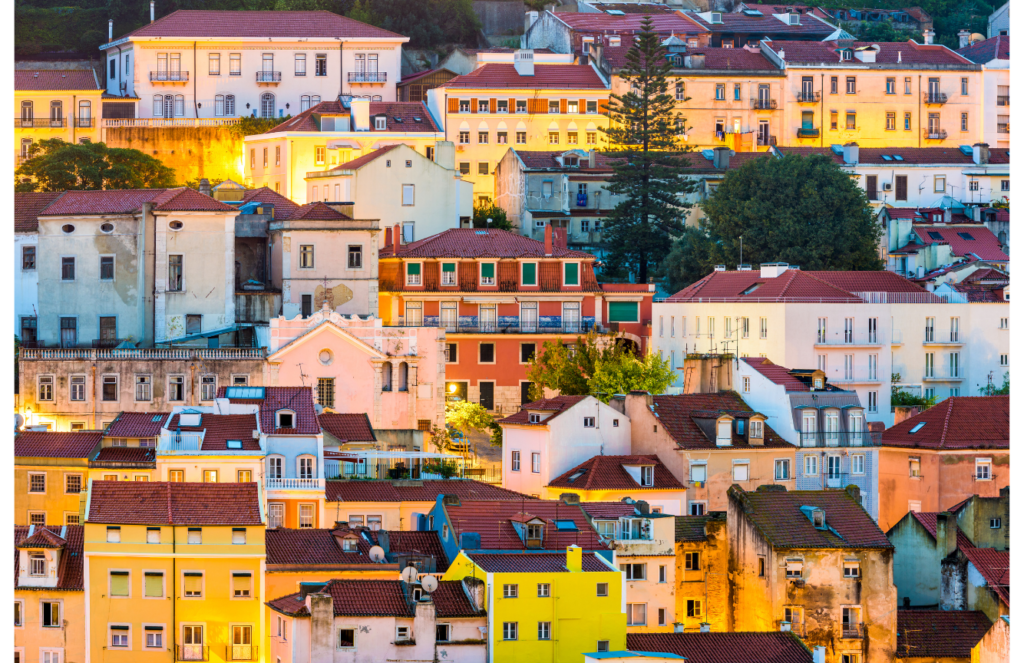
Graça (Selected Areas)
Graça sits high above central Lisbon and gives you some of the best views in the city — but that’s not why it’s on this list. While parts of Graça can get crowded with tourists during the day, there are quieter pockets here that are surprisingly well-suited for longer stays.
The neighbourhood has a mix of old and new: traditional buildings with tiled façades sit alongside renovated apartments and new cafés. Some streets are packed with foot traffic, especially near Miradouro da Senhora do Monte, but others feel like regular residential areas — especially a few blocks inland from the viewpoints.
Graça is walkable, but the hills are no joke. Getting around on foot can be tiring, especially if you’re coming back from downtown. That said, the 28 tram and several bus lines run through the area, and Martim Moniz and Intendente metro stations are close enough if you’re staying on the southern or western edges.
Noise varies depending on location. Streets directly next to viewpoints or tram stops tend to be busier, but if you’re tucked a bit further back, the pace slows down a lot. Evenings in most of the residential streets are calm, with only the occasional tram bell breaking the quiet.
In terms of safety, Graça is generally stable. Like other central neighbourhoods, you’ll find a mix of people — long-time residents, students, visitors — and the area feels lived-in without being chaotic. Some parts, especially closer to Intendente, can feel a bit rough around the edges, so it’s worth checking specific addresses if you’re planning to stay long-term.
Graça works well for people who want something authentic but aren’t bothered by a few hills. It’s ideal for longer stays in Lisbon where you want character, access to central areas, and a place that’s peaceful once the day-trippers head home.
Areas to Avoid If You Want Peace and Quiet
Lisbon has no shortage of interesting neighbourhoods, but not all of them are great for people looking for a quiet place to stay. Some are known for nightlife, while others are so heavily visited that daily life can feel chaotic — especially if you’re staying for more than a few days.
Here are a few areas that might not be the best fit if calm and comfort are high on your list:
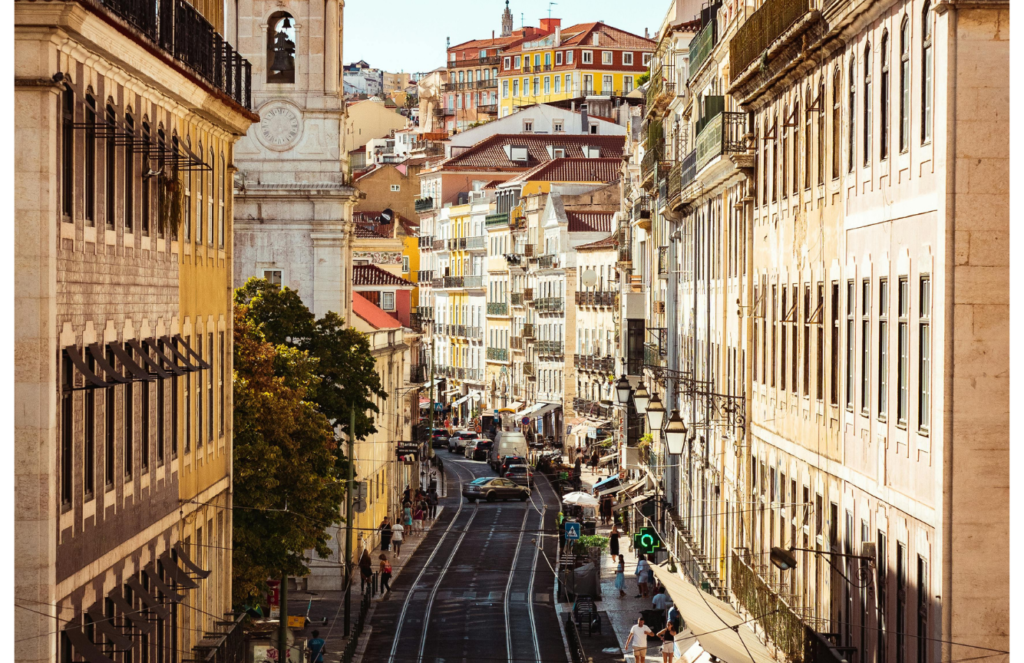
Bairro Alto
By day, Bairro Alto looks like a sleepy, historic area with narrow streets and old buildings. By night, it becomes one of Lisbon’s busiest nightlife districts. Bars stay open late, and crowds fill the streets well into the early morning hours. If you’re staying here, expect noise — even on weeknights.
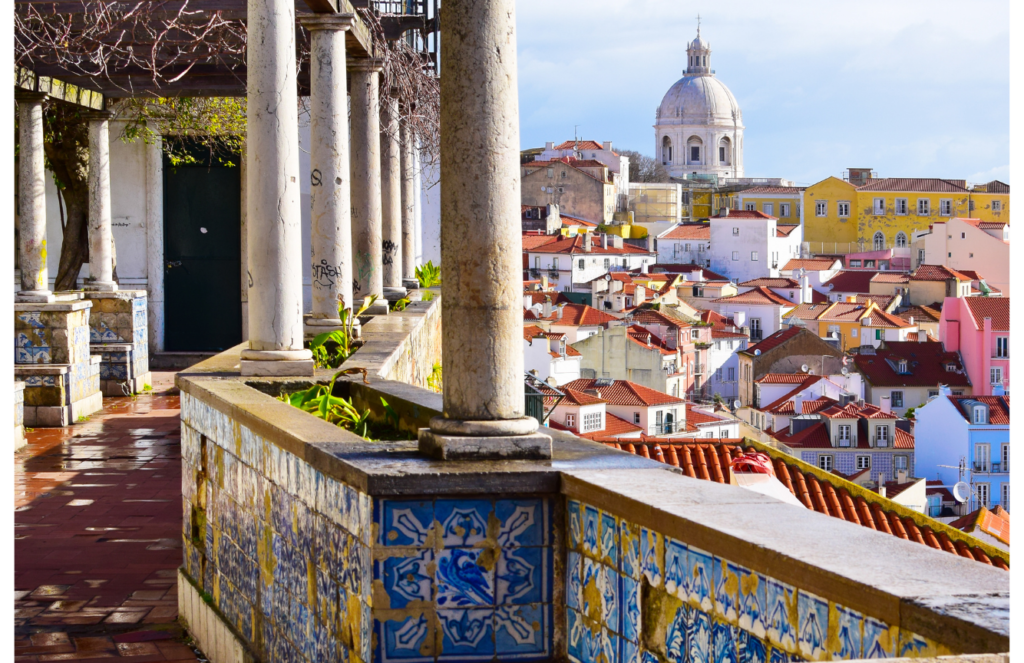
Cais do Sodré
Another major nightlife hub, Cais do Sodré is full of bars, clubs, and late-night food spots. It’s lively and energetic, but not ideal if you’re trying to work remotely or get to sleep early. Even residential buildings here often deal with heavy foot traffic and music from nearby venues.
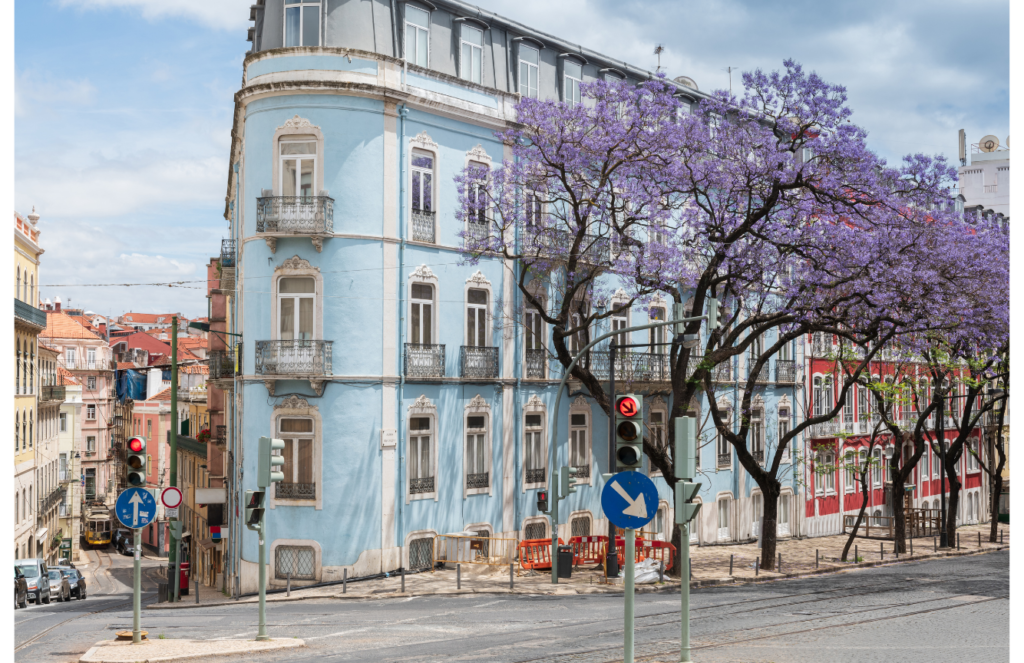
Alfama
Alfama is one of Lisbon’s oldest and most scenic areas, but it attracts large numbers of tourists every day — especially when cruise ships dock nearby. The narrow streets echo with voices, trams, and music from fado houses. While parts of Alfama do quiet down at night, it’s still not the best place if you’re looking for a break from constant movement.

Martim Moniz and Intendente (parts)
Both of these areas are centrally located and well-connected, but they’re busier and more unpredictable than others on this list. The vibe varies block to block — some parts are fine for daily life, but others feel more hectic or less comfortable at night. If you’re considering staying here, it’s worth checking recent reviews of the exact location.
You don’t have to avoid these areas entirely — they each have something to offer. But if your priority is a quiet, low-stress environment for living or working, you may want to look elsewhere.
Final Tips for Choosing the Right Area

Finding the right place to stay in Lisbon depends on what your priorities are. Some people want absolute quiet, even if it means being a bit further from the centre. Others prefer to stay central and are okay with a little background noise as long as it’s safe and convenient.
To make things easier, here’s a comparison of the neighbourhoods covered in this guide based on noise levels, transport access, and the type of person or lifestyle each area is best suited for:
| Neighbourhood | Noise Level | Safety | Access to Centre | Best For |
| Campo de Ourique | Very low | High | Moderate (tram only) | Long-term stays, local living, families |
| Estrela | Low | High | Good (tram + buses) | Remote workers, couples, calm pace |
| Príncipe Real | Medium-low | High | Excellent (walk/metro) | Central location with some peace |
| Alvalade | Low | High | Excellent (metro) | Students, longer-term renters, everyday living |
| Avenidas Novas | Low | High | Excellent (metro) | Digital nomads, professionals, low-drama routine |
| Lapa | Very low | Very high | Moderate (bus/tram) | Quiet stays, older residents, upscale vibe |
| Graça (selected) | Medium | Medium-high | Decent (bus/tram/metro nearby) | Long-stays with local feel and city views |
How to Choose Based on Lifestyle
- For maximum quiet: Campo de Ourique, Estrela, and Lapa are your safest bets — all offer quiet streets, no nightlife, and a slower daily rhythm.
- If you want to be central: Príncipe Real strikes a good balance between access and calm. You’re close to everything, but a few streets off the main areas make a difference.
- For daily convenience: Alvalade and Avenidas Novas have everything you need nearby and are easy to navigate — ideal for longer stays, studying, or remote work.
- If you want views or character: Graça delivers atmosphere and perspective, but pick your street carefully to avoid the busiest areas.
There’s no one perfect area — but if you know what kind of pace and setup you need, Lisbon has something that fits. Use this guide to narrow things down, and when in doubt, take a closer look at the specific street or block before you book or commit to a longer rental.
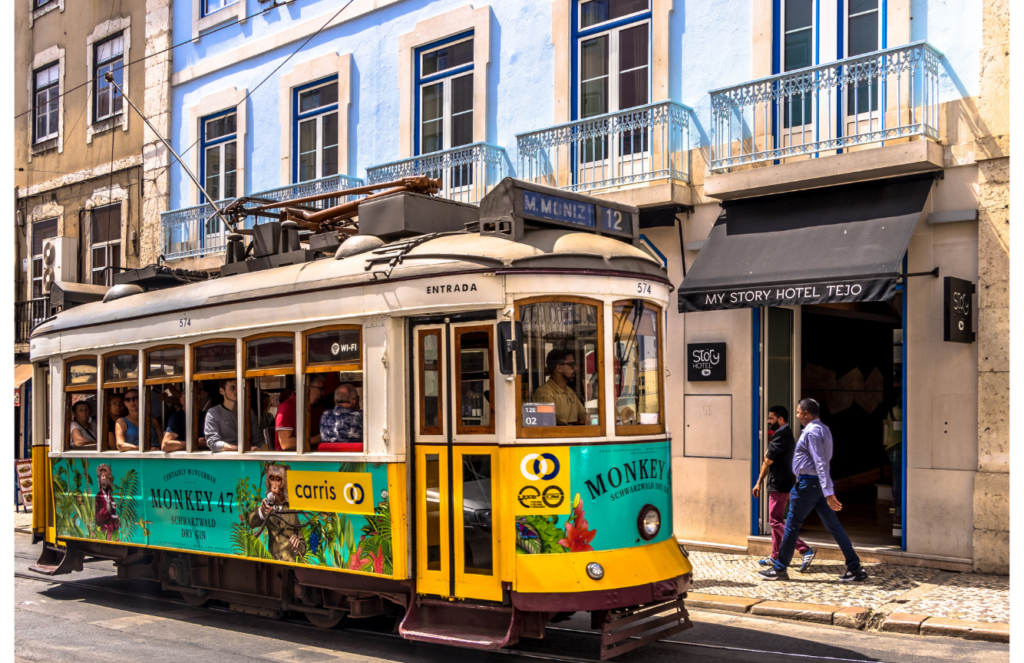
Conclusion
Lisbon has a wide range of neighbourhoods, but not all are equally suited for those prioritising quiet, safety, and central access. While popular areas near the historic core offer plenty of activity, they can also bring noise and crowds. The neighbourhoods covered in this guide present alternatives that balance calm day-to-day living with easy connections to the rest of the city.
Each area comes with its own trade-offs — from hilltop views to limited metro access — but all share the key traits many longer-term visitors or residents are looking for. Whether the goal is remote work, relocation, or simply a more relaxed visit, these districts are consistently reliable options to consider.
FAQ
What is the quietest area to stay in Lisbon?
Campo de Ourique and Lapa are among the quietest areas in Lisbon. Both are primarily residential, have low nightlife activity, and maintain a calm environment even during the tourist season.
Is Lisbon a safe city to live in?
Yes, Lisbon is generally considered safe. Most central neighbourhoods, including Estrela, Avenidas Novas, and Alvalade, have low crime rates and are comfortable to walk through even after dark.
Which neighbourhoods in Lisbon are close to the centre but not noisy?
Estrela, Príncipe Real, and parts of Graça offer proximity to downtown Lisbon while maintaining lower noise levels, especially in streets that are away from main nightlife zones or tourist hubs.
Where should I stay in Lisbon for a peaceful long-term visit?
For longer stays, areas like Alvalade, Campo de Ourique, and Avenidas Novas are well-suited. These districts offer stability, good transport links, and quiet surroundings, making them ideal for remote workers or relocations.

